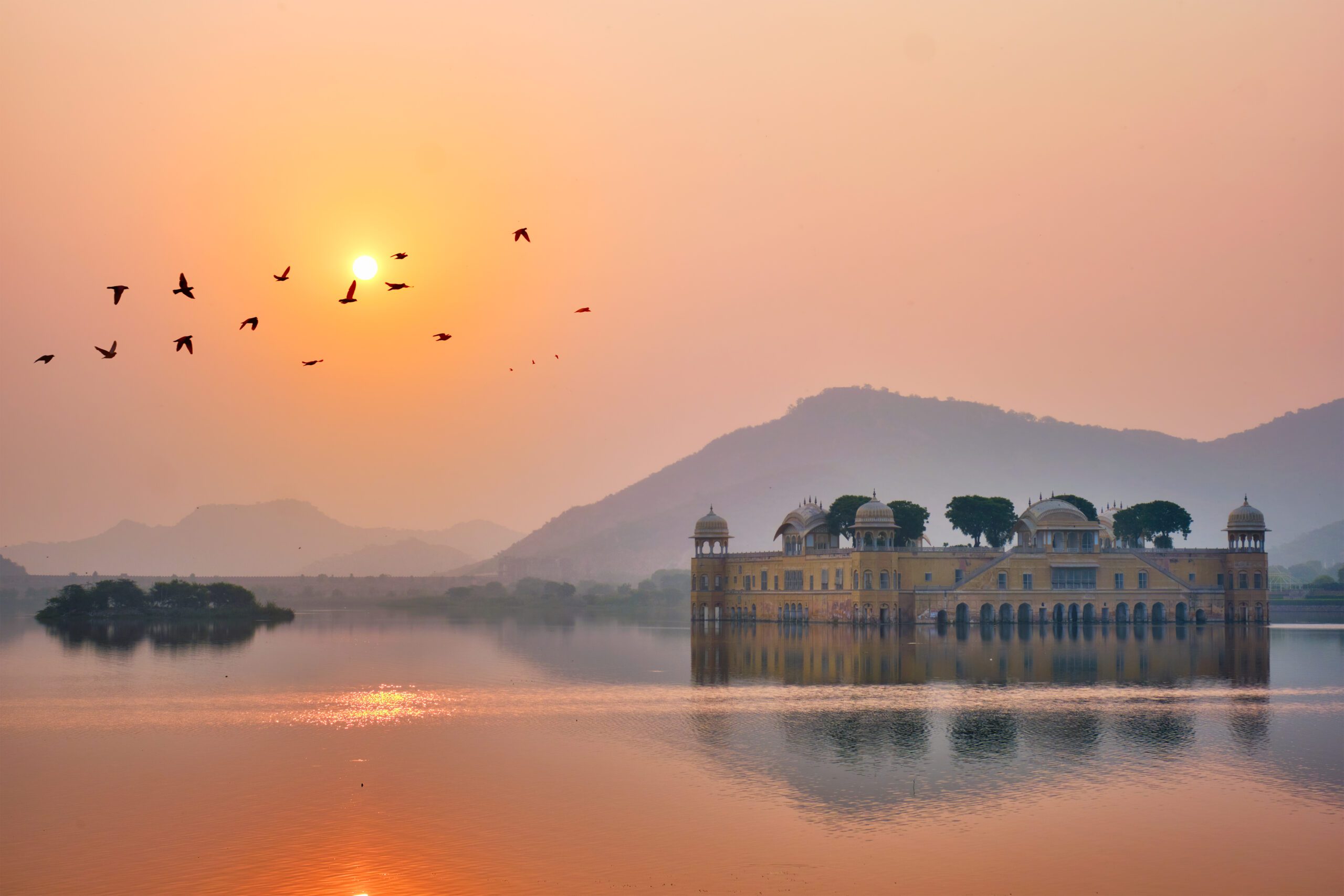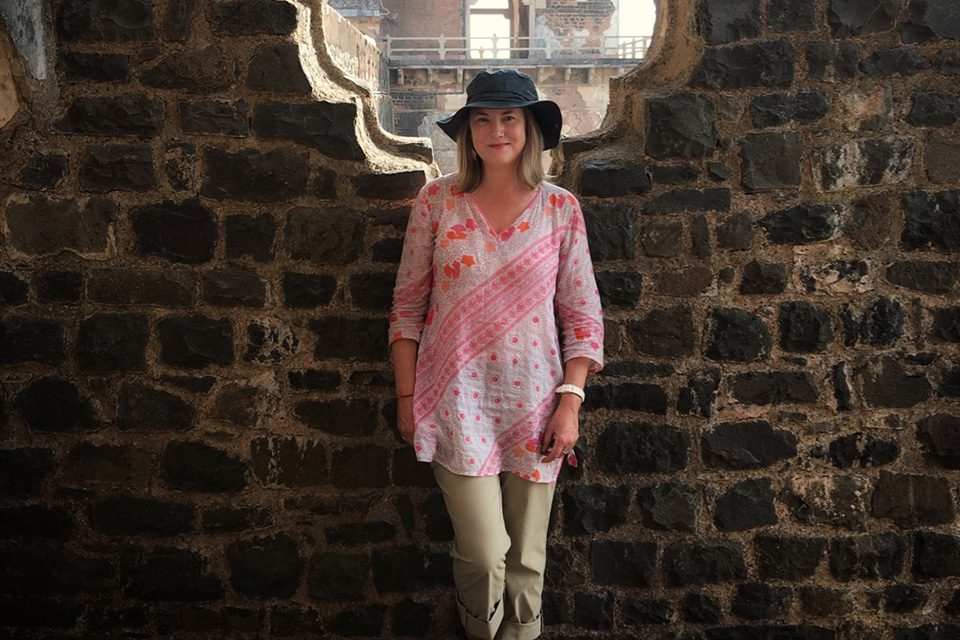Last updated on March 20th, 2024
Featured image: Mariellen Ward shares her tips on travelling solo in India / Photo privided by Mariellen Ward
Advice from a woman currently living in India
by Mariellen Ward
For those want to travel solo in India, it’s always best to ask the locals rather than rely on headlines.
Tips for travelling solo in India
1. Go to India with an open mind and heart
Be cautious, but don’t be nervous. Be open, but don’t be naive. Yes, India is overwhelming to the first-time visitor and most people experience culture shock. (You can spot first-timers by the deer-in-the-headlights look they have on their faces.) I have said in other posts on this blog that India is like the cave Yoda sends Luke into: you will only find what you bring with you. So, don’t bring fear. Most Indians are the nicest, friendliest and most helpful people you will ever meet. Even when they are trying to part you from your rupees, they are mostly very nice about it.
2. Do your research on India
Travel in India is just not the same as going to the Caribbean, Greece, or even Thailand. It is massive, diverse, traditional, ancient … and it can be an overwhelming travel destination. Knowing as much as you can about the culture can help prepare you. For example, many tourists go to Rajasthan, but that doesn’t mean the desert state is westernized. Far from it – Rajasthan is one of the more traditional states in India. Wearing a tank top and shorts is just not appropriate in Rajasthan and can invite unwanted attention. On the other hand, in certain parts of Mumbai, like Colaba and Bandra, wearing revealing western clothing is much more acceptable.
Read books about India, and by Indian authors, and watch movies about India. India has a rich historical and cultural past and it is still largely a traditional society, in spite of all the mobile phones, Bollywood glamour and Levi jeans. Find out as much as you can about Indian society, as it will make travel easier. Many foreigners get frustrated by the way business is conducted in India — but it is futile and a waste of energy to get hot-and-bothered. It is also not culturally acceptable to express anger or to cast blame in public. Much better to try and understand, show some respect for an ancient culture (that is much wiser than the west in many ways) and go with the flow.
3. Adjust your expectations about India
If you are from a western country like Canada, the U.S., the U.K., Germany or Australia, you cannot come to India and expect that you will freely be able to do all the things you do at home. You have to accept reality: India is a traditional society in the throes of great change. It is very wise to play it safe, as I do, and wear loose, modest clothes; refrain from overly friendly behaviour with unknown men; and be very cautious about moving around at night. Travel in India is different than other destinations, and travel safety should always be a concern.
4. Be confident, not polite!
This is a top tip for women travelling in India and elsewhere. I’ve had many online discussions with women who travel regularly in India and other challenging destinations about staying safe. Most of them stress that how you carry yourself plays a large part in your experience. If you are confident, you are less likely to attract unwanted attention they say, and I agree. Apparently, rapists look for women they perceive to be easy targets; women who don’t look like they will put up a fight.
As a Canadian, I come from a culture of politeness, but sometimes in India – often, in fact – polite doesn’t work. If I feel someone is harassing me for whatever reason, I have become very adept at either becoming very cold and ignoring them, or becoming quickly angry and saying “jyao,” loudly, which means “go” in Hindi. I wrote a blog post about the need to sometimes appear rude to stay safe. Unfortunately, you do have to keep your guard up in India, it’s not always easy to know who to trust. Local friends come in very handy, and so does travelling with a trusted travel company.
Read this post to brush up on basic Hindi for travelers.
5. Watch how you relate to men
In India, you have to be careful about how you relate to some men – specifically, less educated men working in service, transportation or hospitality. In other words, if you are overly friendly with an autorickshaw driver, you could inadvertently be giving him the wrong signals. It’s unfortunate that foreign women are sometimes seen as more “available” than Indian women, too – which doesn’t help.
Again, realize that much of India is still a traditional society, and in certain parts of society the genders do not mix. Many of the men in India are just not that sophisticated when it comes to flirting and dating, etc. Obviously, there are lots of educated and well-travelled men in the modern metros, like Delhi and Mumbai, who understand the signals we take for granted in the west. But lots don’t and will take your friendliness as an open invitation for sex. Err on the side of caution. As a tourist in India, keep safety in mind at all times.

Tranquil morning at Jal Mahal Water Palace at sunrise in Jaipur, Rajasthan / Photo by f9photos
6. Use transportation strategies
I have travelled all over India, on overnight trains, in countless autorickshaws and taxis, and sometimes even on the backs of motorcycles. I have never felt in danger and never felt unsafe, but I am cautious and I have come up with a couple of strategies, especially for travel at night. To start, get someone to pick you up at the airport when you land. Many good hotels and guest houses will arrange this for you.
Also, when leaving a bar or restaurant, get someone to walk you to an auto or taxi. Or call someone, and loudly tell them the number of the taxi, so the driver can hear. Plan your travel so you don’t arrive in the middle of the night; and try to have someone meet you at the train station or airport. Many hotels and tours offer this service. Always let someone know where you’re going, and stay connected to friends and contacts via social media.
Check out my post about travelling on Indian trains, planes, and automobiles.
7. Carry a mobile phone
Getting a local SIM card and carrying a mobile phone is essential for both safety and convenience, I believe, as India is a mobile phone-obsessed nation. Everything is done via text message, including train tickets, taxis, and manicure appointments, and you need it to communicate with drivers. You can buy a cheap phone, or get a SIM card for your regular phone when you get to India.
Prepaid rates are very cheap for text, data, and talk time. Just make sure you have a copy of your passport and Indian Visa, and a passport-sized photo with you when you go to the store to get the phone or SIM card. There’s a lot of free WiFi available in India, in places like airports and cafes, but you need a local number to log in.
TIP: Always carry extra photocopies of your passport and Indian Visa, and extra passport photos. You can get passport photos in India very cheaply – a sheet of 16 cost me about $3.
8. Wear Indian clothes
Indian clothes are light, comfortable, inexpensive and appropriate to the climate and the need for modesty. I usually wear the three-piece salwar kameez, or Punjabi suit; or a kurtah and trousers when in India. But wearing Indian clothes is a bit controversial among my Indiaphile friends. Some say it just draws more unwanted attention; others say it draws respect and protects you. I am in the second camp. I am a big believer in the “when in Rome” philosophy of travel.
Not only do I wear Indian clothes, but I also wear Indian jewelry, and sometimes I even tell people I am married to an Indian man and that I live in Delhi. The family is the strongest social structure in India. As the wife of an Indian man, I am perceived as Indian, as part of the society — an insider — and even more importantly, as someone whose movements are probably closely tracked, and who will be missed. I feel my gold Indian ring draws a veil of protection around me … it works for me.
Read More: What To Wear in India
9. Change your attitude
I think our attitude and level of confidence play a big part in our experience of travel – and studies have shown that men attack women they perceive to be vulnerable. If you are seriously afraid to visit a country, it’s probably not a good idea to go. Pushing your comfort zone is okay if you know you are up for it. But if you are really fearful, you may find yourself having scary experiences. That’s how life seems to work, from my experience. Not always, of course, but a significant percentage of the time.
10. Find other like-minded travelers
It’s easy to meet other travelers in India, especially at hostels, in favourite traveler destinations like Rishikesh, Pushkar, Goa, Manali, Dharmasala, Varkala Beach, etc. Check out this post about the Best places to visit in Goa for unique ideas. Plus, you can find travelers through online forums and by using hashtags on social media. Just be careful not to reveal your location in real-time – later-gramming is a good idea, even your Instagram stories. Unfortunately, there’s a lot of creeps online (as we all know).
More Stories From India
G Adventures Expands Itineraries for Older Women on 2025 Classic, Dr. Jane Goodall Collection and Geluxe Trips
G Adventures is expanding its range of adventure trips for older women, focusing on affordability, longer stays and unique accommodations.
The Widows of Malabar Hill, Based on the Story of India’s First Female Lawyer
Inspired in part by a real woman who became India’s first female lawyer, The Widows of Malabar Hill brings us to 1920s Bombay.
JourneyWoman Webinar: Less-Travelled India and Asia on August 27, 2024
Join our August 27 India and Asia webinar to learn more about lesser known places from experts in our JourneyWoman Women’s Travel Directory.








Really appreciate your direct honesty about moving around in India. If we go, we would be on a tour.